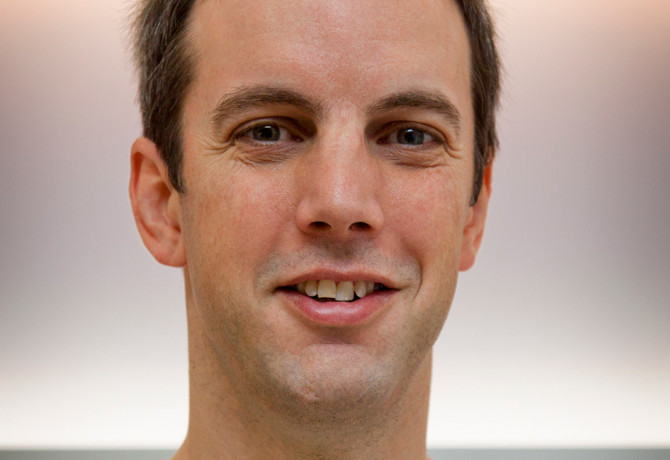It’s been nearly two decades since the first brand lift studies for digital advertising started. Duncan Southgate, global brand director at Kantar Millward Brown, takes a look back to see what we can learn today.
On 3 December 1996, the first-ever brand lift study was released which demonstrated the brand-building power of online banner ads. Run via the ‘Hotwired’ website, the study looked at ads for Dockers, AT&T and Microsoft, discovering brand metric improvements ranging from 9% for Dockers khakis, 12% for AT&T and up to 15% for Microsoft’s Internet Explorer.
The study was led by Rex Briggs (then research director at HotWired, now the Founder and CEO of Marketing Evolution) and Nigel Hollis (then director of R&D, and now Kantar Millward Brown’s chief global analyst).
The US study was merely the first of many. The UK’s first equivalent for the Electronic Telegraph, Ford and IBM took place a year later, and Kantar Millward Brown has since conducted more than 13,000 digital studies. Despite the passage of time, some of the themes identified by those early studies remain relevant today.
A New York Times article from 1996 said: “One particularly popular activity in the realm of interactive media, apart from downloading photographs of Teri Hatcher, has been banner-bashing. Banners – the tiny display advertisements that are the cyberspace equivalent of billboards – have been roundly condemned as boring and ineffective because of their size and usually prosaic nature.”
From Teri Hatcher to Beyoncé
So while actress Teri Hatcher has been replaced by the likes of Beyoncé, Kim Kardashian and Caitlyn Jenner, the urge to banner bash has remained strong creating an on-going need for evidence that digital marketing builds brands.
In 2009, Millward Brown and DoubleClick published definitive evidence based on more than 4,000 ads that click rates, interactions and expansion rates are not reliable predictors of brand response, establishing that marketers cannot rely solely on behavioural data for optimisation and measurement.
“New formats consistently demonstrate higher effectiveness in the first year or two following their introduction”
Despite many technical advances in tracking and sampling, the standard methodology has not changed significantly; it still involves comparing attitudinal responses among matched control and exposed groups. Advertisers can isolate the ‘deltas’ between these groups, compare those deltas to norms, and then explore the ads, sites, and frequency levels which are most cost-effectively changing brand attitudes.
But if much has remained the same, clearly the digital world has also evolved dramatically in the last two decades.
Cluttered online world
Today’s banners still pack a punch, though they don’t always deliver the same brand return as their pioneering counterparts from 1996. The main reason for this is that the online world is more cluttered. Back in 1996 the Dockers, AT&T and Microsoft banners didn’t have to compete for attention with other ads or with too much competing website content. The Hotwired website in 1996 was basic but clean, and appealing compared to many modern sites.
Banners are no longer the only game in town. New formats, devices and platforms have continued to arrive and depart, ranging from streaming media (the old name for online video), social network ads as well as mobile. Our campaign database now records 35 different format shapes and sizes (from buttons to full page units) as well as a huge variety of different creative approaches (animated, expandable, in-stream and so on). Most recently brand lift studies have started being conducted for addressable TV ads.
This constant invention and reinvention is an essential element of digital’s enduring success. New formats consistently demonstrate higher effectiveness in the first year or two following their introduction. This honeymoon period should encourage marketers to be brave and test new platforms and new formats.
Brand lift studies have become more global too. Kantar Millward Brown has now conducted digital studies in 40 different countries although in many markets they are only applied to major campaigns.
The speed of feedback has also increased dramatically, with virtually all studies now delivered via real-time dashboards and used to optimise campaigns in market rather than report results after the fact.
More changes ahead
The next few years will undoubtedly bring more changes. In the near term we will see continued growth in dedicated mobile effectiveness studies. Before long, however, the walled gardens of Google and Facebook will open their gates to trusted measurement partners to enable cross-device and cross-publisher assessments, folding mobile back into the bigger “digital” picture.
“Perhaps my successor will be busy establishing brand-building norms for ads on refrigerators and drones”
Global expansion will continue as brand new markets such as Pakistan start to hit digital spend levels that make brand research both feasible and necessary. Other markets in Western Europe, developed Asia and LatAm will extend the frequency and breadth of measurement, and new capabilities such as addressable TV will also expand beyond the US.
As for the next 20 years, who knows? Perhaps my successor will be busy establishing brand-building norms for ads on refrigerators and drones. The central question, however, won’t change and people will be looking to measure the impact of what truly matters – does this activity build my brand and make my target audience more likely to buy my products or services in both the short and long-term?








